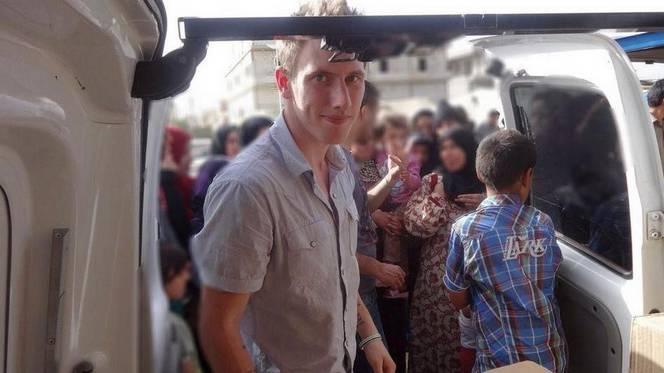“If the outbreak is not stopped now, we could be looking at hundreds of thousands of people infected with profound political and economic and security implications for all of us,” Those were the words of U.S President Barack Obama, after getting briefed by officials at the Centers for Disease Control and Prevention in Atlanta.
However, barely a month after the statement was made, the first person diagnosed with Ebola in the United States was fighting for his life at a Dallas hospital on Sunday and appeared to be receiving none of the experimental medicines for the virus, a top U.S. health official said.

Thomas Eric Duncan became ill after arriving in the Texas city from Liberia two weeks ago, heightening concerns that the worst Ebola epidemic on record could spread from West Africa, where it began in March. The hemorrhagic fever has killed at least 3,400 people out of the nearly 7,500 probable, suspected and confirmed cases.
"The man in Dallas, who is fighting for his life, is the only patient to develop Ebola in the United States," Dr. Thomas Frieden, director of the U.S. Centers for Disease Control and Prevention (CDC), said on CNN's "State of the Union."
In a media briefing with reporters on Sunday, Frieden said he was scheduled to brief President Barack Obama on Monday.
Frieden said doses of the experimental medicine ZMapp were "all gone" and that the drug, produced by San Diego-based Mapp Biopharmaceutical, is "not going to be available anytime soon."
Asked about a second experimental drug, made by Canada's Tekmira Pharmaceuticals Corp, he said it "can be quite difficult for patients to take."
Frieden said the doctor and the patient's family would decide whether to use the drug, but if "they wanted to, they would have access to it."
"As far as we understand, experimental medicine is not being used," Frieden said. "It’s really up to his treating physicians, himself, his family what treatment to take."
Duncan remained in critical condition, Wendell Watson, spokesman for Texas Health Presbyterian Hospital in Dallas, said on Sunday.
Earlier on Sunday, health officials said they were also seeking a "low-risk" homeless man who was one of 38 people who had potentially had contact with Duncan. Later on Sunday, a spokeswoman for Dallas County's top political official, Judge Clay Jenkins, said the man had been found and was being monitored.
At Wilshire Baptist Church in Dallas, parishioners prayed for Duncan, congregation member Louise Troh - who is quarantined because of her close contact with Duncan - and both of their families.
"Although this disease has become personal to us, we realize we're not the first to know its devastation, and we are not the ones most desperately affected," Associate Pastor Mark Wingfeld told the church audience.
He encouraged parishioners to focus not only on the Dallas family but also on those in West Africa stricken with Ebola.
In Nebraska, another hospital was preparing for the arrival of an Ebola patient who contracted the virus in Liberia, a spokesman said on Sunday.
Nebraska Medical Center spokesman Taylor Wilson would only identify the patient as a male U.S. citizen expected to arrive on Monday. But the father of Ashoka Mukpo, a freelance cameraman working for NBC News who contracted Ebola in Liberia, told Reuters on Friday that his son was going to Nebraska for treatment.
The Nebraska hospital last month also treated and released, Dr. Rick Sacra, an American missionary who also contracted Ebola in Liberia.
Sacra was admitted to UMass Memorial Medical Center in Worcester, Massachusetts on Saturday for a likely respiratory infection that is not believed to be a recurrence of the disease, hospital officials said.
Duncan's case has highlighted problems that American public health officials are trying furiously to address: The Dallas hospital that admitted him initially did not recognize the deadly disease and sent him home with antibiotics, only for him to return two days later in an ambulance.
"The issue of the missed diagnosis initially is concerning," Frieden said, adding that public health officials had redoubled their efforts to raise awareness of the disease.
"We're seeing more people calling us, considering the possibility of Ebola - that's what we want to see," he said on CNN. "We don't want people not to be diagnosed."
Frieden said he was confident the disease would not spread widely within the United States. U.S. officials are also scaling up their response in West Africa, where Ebola presents an enormous challenge, he added.
"But it's going to take time," Frieden said. "The virus is spreading so fast that it's hard to keep up."
When asked on Sunday if the United States should suspend flights to and from affected countries or impose a visa ban on travelers from those countries, Anthony Fauci, director of the National Institute of Allergy and Infectious Diseases, said "absolutely not."
"When you start closing off countries like that, there is a real danger of making things worse," Fauci said on "Fox News Sunday."
"You can cause unrest in the country," he said. "It’s conceivable that governments could fall if you just isolate them completely."
The CDC has identified 10 people who had direct contact with Duncan as being at greatest risk of infection. Another 38 were being monitored as potential contacts, out of 114 people initially evaluated for exposure risks. None from either group has shown symptoms, health officials said.
Culled

